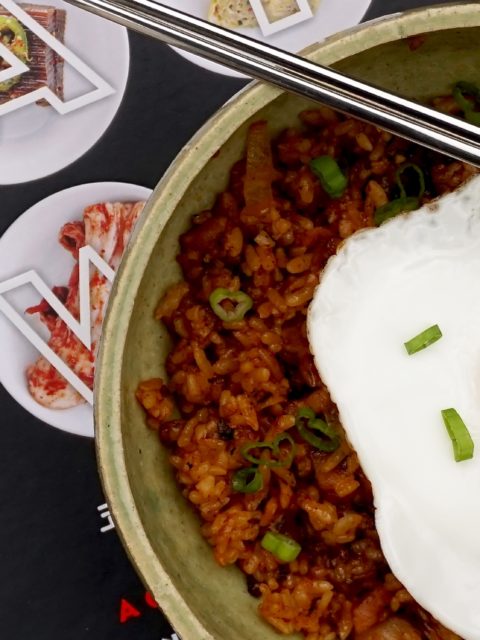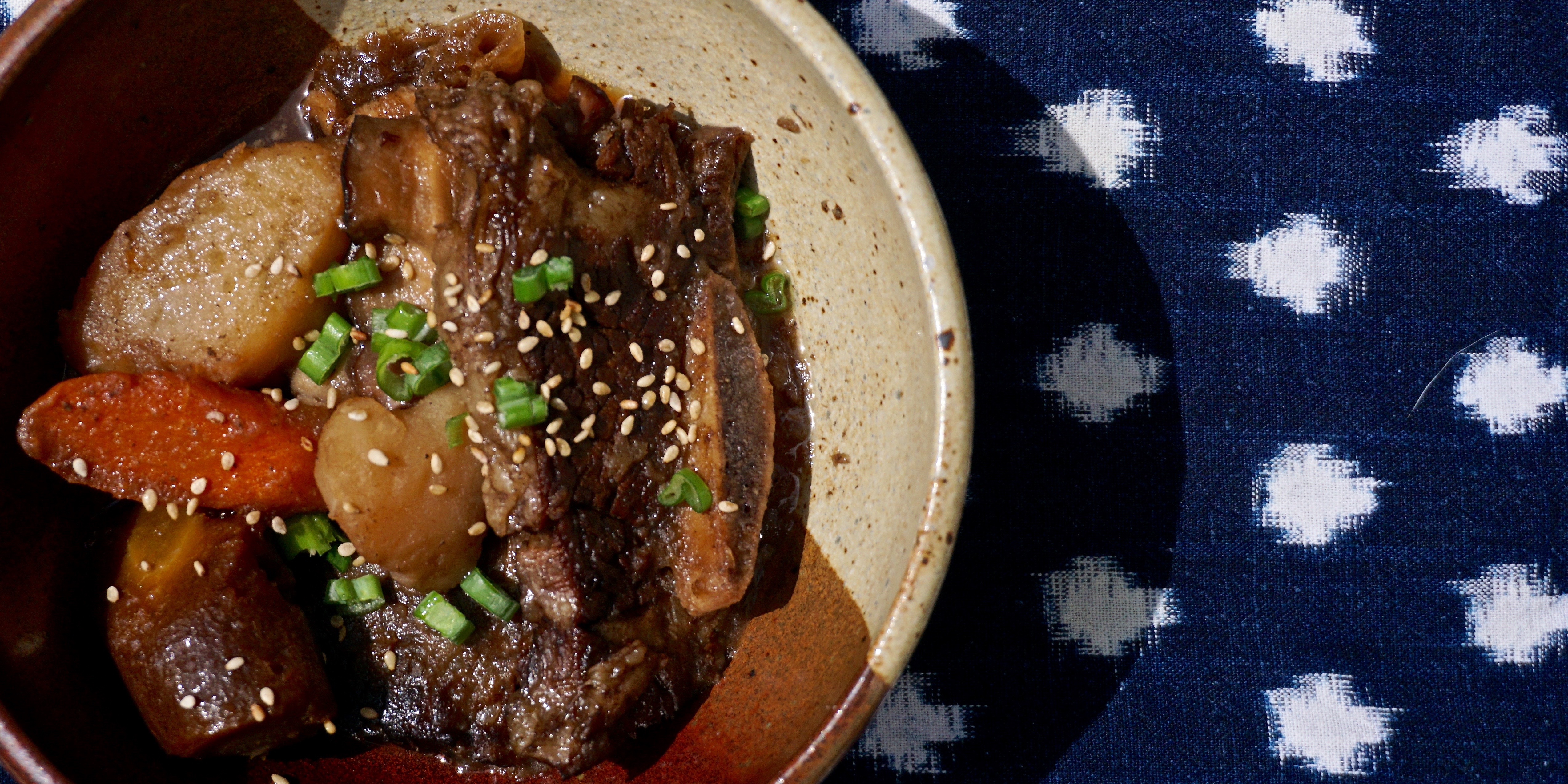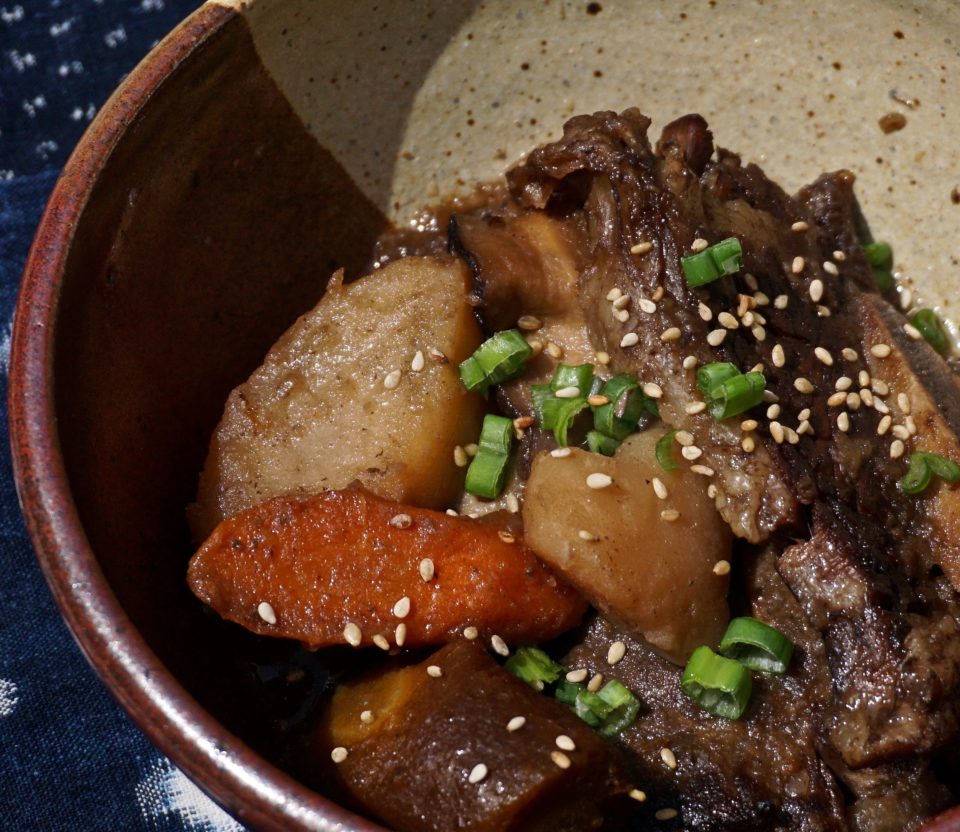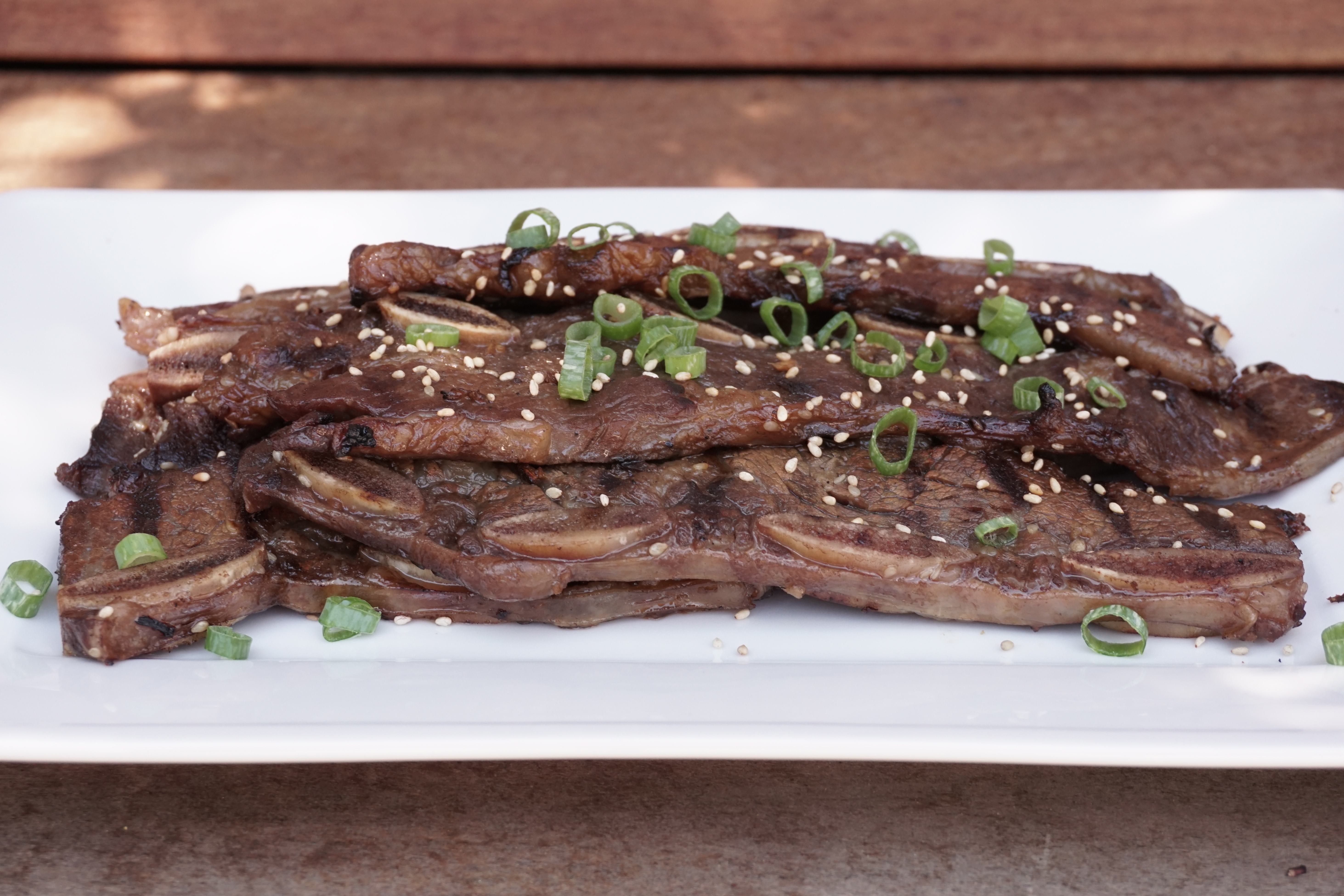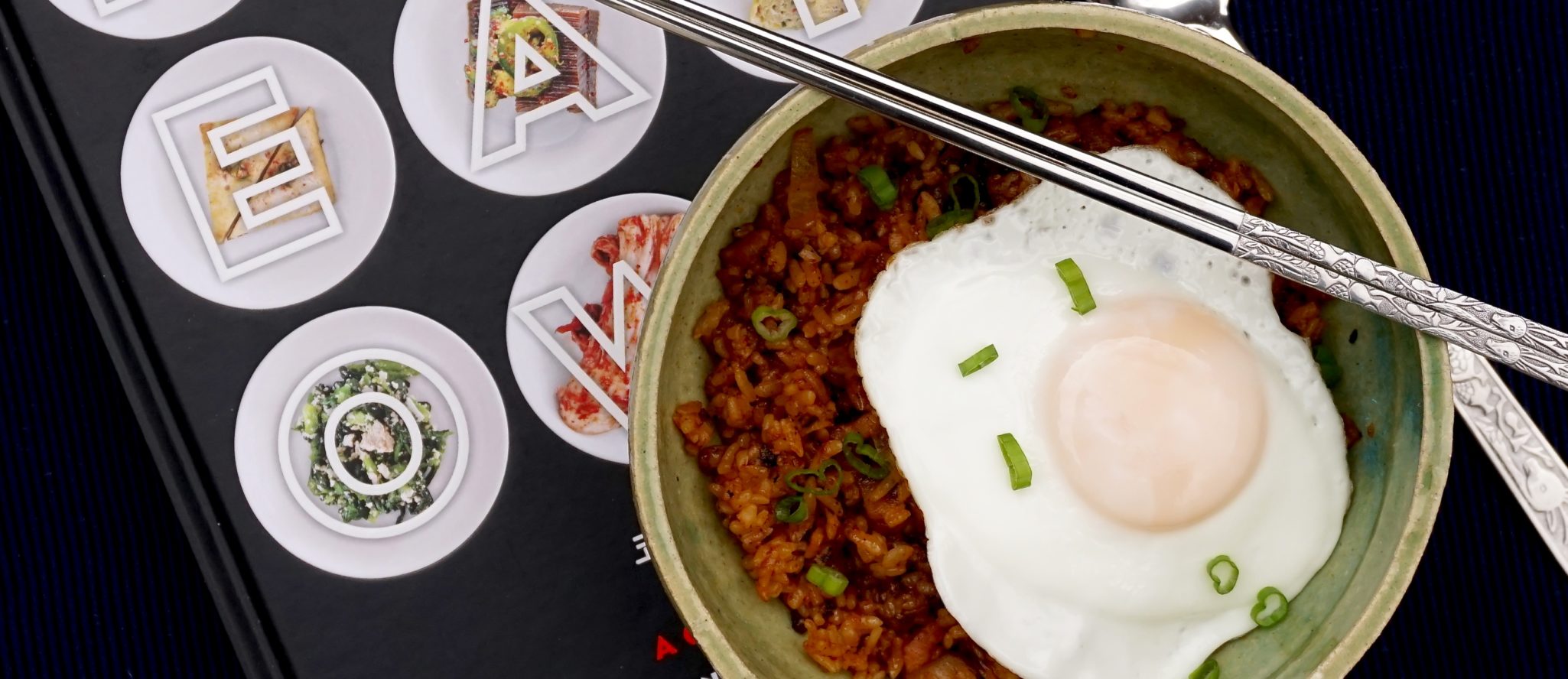
Rice Rice Baby (Kimchi Fried Rice)
Growing up I remember we had one big pot, well worn, dented and it’s bottom darkened from frequent use. It was my Dad’s favorite cooking utensil and he used it for everything. He stir-fried, boiled, simmered, stewed and steamed in that pot and everything that came out of that pot was amazing. I loved his fried rice. He started with rice leftover from the previous night’s dinner added diced sweet barbecued pork, green peas, bits of scrambled eggs and finished off with shredded lettuce. He seasoned it with soy sauce, oyster sauce, ginger, and onions it was the epitome of a delicious one pot meal. As I grew older I would help by stirring and flipping the rice in the pot as he added the ingredients.
Everything comes full circle. Fried rice is also a favorite of my kids. Though I often make my Dad’s version, there are infinite variations of the dish. A down home version with salted fish, bits of chicken and ginger to the Korean version made with spicy pickled kimchi, yum. As much as I love my Dad’s, my current favorite is kimchi fried rice. I recently picked up a new cookbook titled Koreatown by Deuki Hong and Matt Rodbard. A glimpse into living, eating and playing in Koreatown USA. It starts with a primer on Korean ingredients followed by recipes. Vignettes are interspersed throughout the book on growing up in K-Town NYC and touring other Koreatowns throughout the country. Recipes range from traditional to let’s take Mom’s recipe and “tweak” it. Gorgeous photos of the food, restaurants and K-Town life bring the stories and recipes to life. You will need two copies of this book. One in the kitchen to cook from and one on your coffee table to read and enjoy.
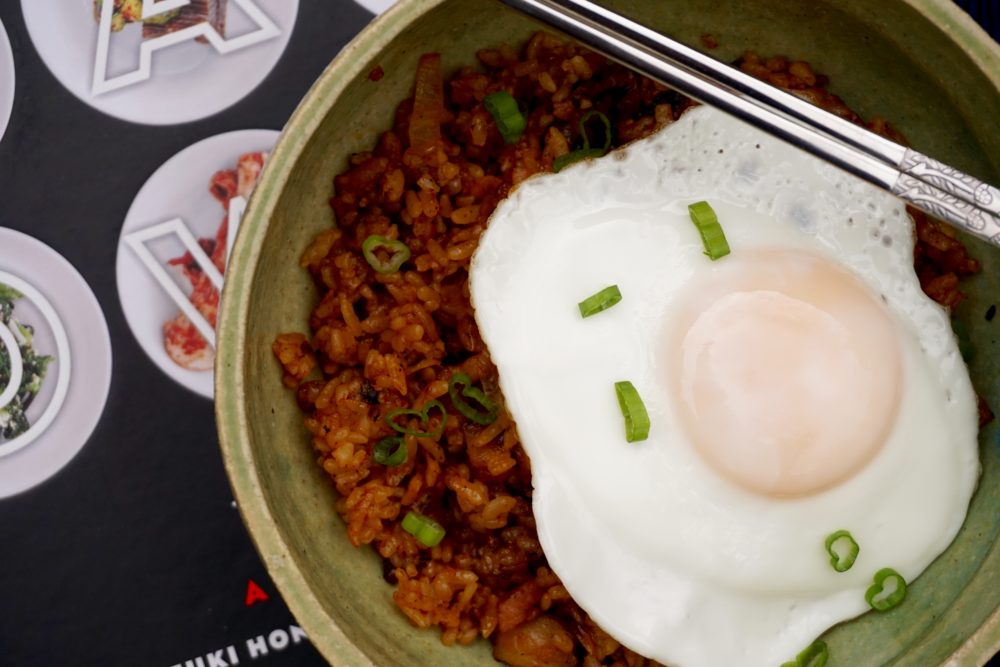
Back to kimchi fried rice. There are some universal trade secrets when it comes to making great fried rice. The rice should be day old not freshly made. Fresh rice contains too much moisture for making fried rice. You can use long grain or short grain rice. Keep in mind short grain will be a little stickier than long grain but it still works. You can practically put anything into your dish and chances are it will be good. Pineapple and bbq pork, shrimp, leeks and pine nuts, or try Hawaiian style with spam (don’t laugh its really good), ono-licious as they say on the islands. Koreatown’s kimchi fried rice has a secret ingredient, bacon. Yep, porky goodness to go along with the spicy pickled flavor of the kimchi that gives this fried rice a nice twist. Even though the Koreatown recipe is pretty darn good on its own I tweaked it to my taste. I love the bacon which added a smoky saltiness but I wanted a little sweetness so in addition to the bacon I added diced chinese sausage (lop cheung). A touch of soy sauce and sesame oil heightened the flavor of the dish. I don’t have a refrigerator in my garage with homemade kimchi (every Korean family has one) so my kimchi comes from my neighborhood farmer’s market. You can usually find kimchi and Chinese sausage at most Asian markets. Top with a perfectly fried egg and you have a delicious easy & quick one pot meal. I hope you will try it.
Kim Chee Fried Rice-Koreatown
Ingredients
Adapted from Koreatown
- 8 ounces slab bacon roughly chopped or reduce amount of bacon 4 ounces & add 1-2 chinese sausages that have been diced to 1/4 inch pieces
- 2 garlic cloves minced
- 1 medium onion finely chopped
- One 1-inch piece ginger peeled and minced
- 2 cups cooked long-grain white rice preferably day-old rice in a pinch short grain will work also
- 1½ cups chopped napa cabbage kimchi I use quite a bit less, approximately 1/2 cup
- Kosher salt to taste or soy sauce (start with 1 tablespoon)
- 2 tablespoons butter softened
- 1-2 teaspoons sesame oil
- 1 tablespoon gochujang korean pepper paste
- 4 eggs fried sunny-side up, for serving or if you like you can soft scramble eggs and add to rice at the end of the cooking process.
- Thinly sliced scallions for garnish
Instructions
- 1. In a large wok or pot, cook the bacon over medium-high heat until the fat has rendered and the bacon is crisp, about 8 minutes. Add the garlic, onion and ginger, Chinese sausage and cook until aromatic, 1 to 2 minutes.
- 2. Add the rice and kimchi, and cook, tossing frequently until heated through, 4 to 5 minutes. Season with salt and sesame oil. Taste, add soy sauce if needed. Reduce the heat to medium low and flatten the rice with your spatula. Cook until the rice forms a crust on the bottom of the pan, 4 to 5 minutes.
- 3. Meanwhile, in a small bowl, mix together the butter and gochujang until smooth. Spoon the gochujang butter over the rice and top with fried eggs and sliced scallions, then serve.
